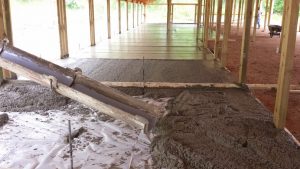Welcome to Ask the Pole Barn Guru – where you can ask questions about building topics, with answers posted on Mondays. With many questions to answer, please be patient to watch for yours to come up on a future Monday or Saturday segment. If you want a quick answer, please be sure to answer with a “reply-able” email address.
Email all questions to: PoleBarnGuru@HansenPoleBuildings.com
DEAR POLE BARN GURU: Builder just built a pole barn, 36x53x11. Great looking. I was planning on finishing the ceiling and insulating it. Because of this he left out the vapor barrier, said you don’t need that If you are insulating the ceiling?
True? PERPLEXED IN PENNSYLVANIA
DEAR PERPLEXED: I will assume you have a steel roof. If so, your builder has done you a huge disservice by not using a vapor barrier. Why builders so often do this is beyond my comprehension.
In all probability you are going to experience condensation problems. Before you get the ceiling in, you are going to have dripping from the underside of the roof steel onto the floor, usually at every purlin. Once the ceiling is installed, prepare for damp insulation (reducing its efficiency), as well as mold forming within the attic space. Not a pretty sight and eventually the decay could cause failures in the roof members.
From where you are at now your best, albeit not inexpensive, solution is going to be to spray foam the underside of the roof steel. You also need to provide adequate ventilation to the attic space you will be creating. If you have enclosed vented soffits on each sidewall and a vented ridge it should prove adequate. If neither of these are present, you can add gable vents. Each end would need a minimum of 3.18 square feet on net free area, with the vent placed in the upper one-half of the attic.
DEAR POLE BARN GURU:Will roof trussing work on 6 foot center for a 30 by 60 hay barn with 2 by 4 purlins? VASCILLATING IN VIRGINIA
DEAR VASCILLATING: Trusses – certainly they will work spaced one every six feet, however unless you are willing to place sidewall columns every six feet, it will necessitate having headers (truss carriers) between the columns. On the purlins, depending upon your snow load and grade of available lumber, you might need to place the purlins on edge. It is very probably your idea is not the most cost effective design solution. I would encourage you to investigate sidewall columns placed every 12 feet, with double trusses at each interior column and 2×6 purlins or larger joist hung on edge between the trusses. This is going to be the best design solution structurally and is almost always the most cost effective.







